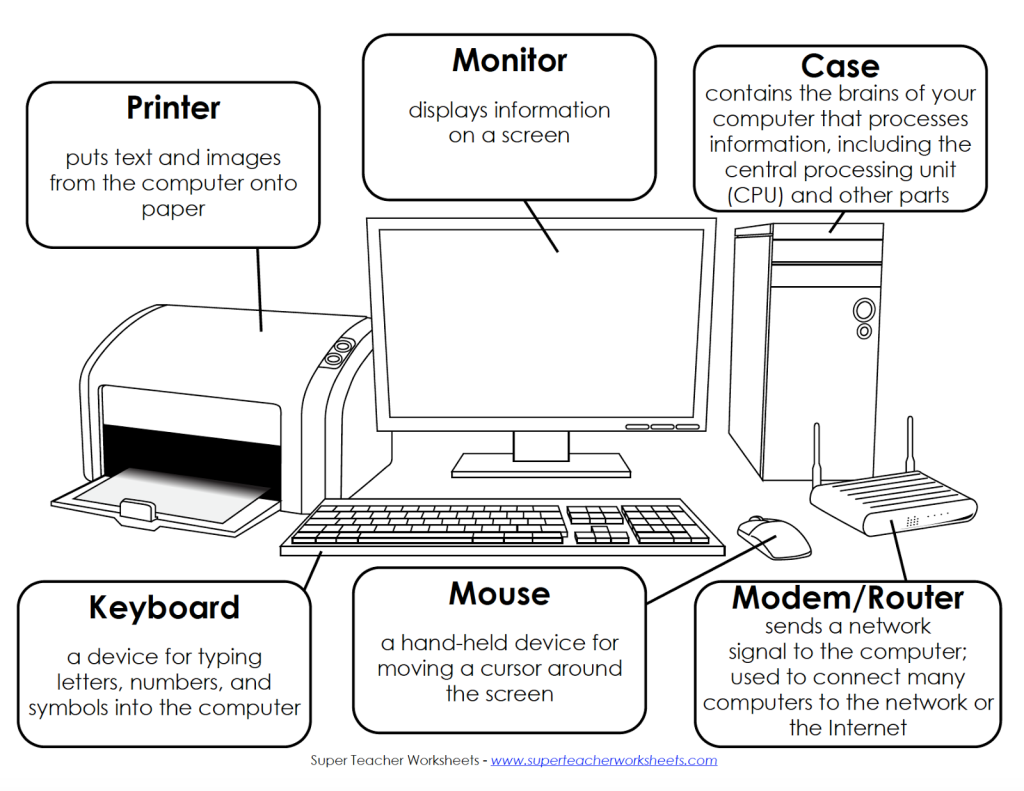The Ultimate Guide To Computer 3 Parts: Unlocking The Power Within
Computer 3 Parts: Understanding the Core Components of a Computer
Introduction
Hello readers,
2 Picture Gallery: The Ultimate Guide To Computer 3 Parts: Unlocking The Power Within


Welcome to our informative article about the three essential parts of a computer. In today’s digital age, computers have become an integral part of our lives. Whether it’s for work, education, entertainment, or communication, understanding the core components of a computer is crucial. In this article, we will delve into the three main parts of a computer, their functions, and how they work together to bring the powerful device we all rely on.

Image Source: wikimedia.org
So, let’s dive in and explore the fascinating world of computer components!
Overview of Computer 3 Parts
Before we delve into the intricacies of each component, let’s have a brief overview of the three main parts of a computer:
Component
Description
1. Central Processing Unit (CPU)
The brain of the computer that performs calculations and executes instructions.

Image Source: blogspot.com
2. Random Access Memory (RAM)
A temporary storage space for data and instructions that are currently being used by the CPU.
3. Hard Disk Drive (HDD) or Solid State Drive (SSD)
A permanent storage device that stores all the data and programs even when the computer is turned off.
What is a Central Processing Unit (CPU)?
🧠 The CPU, also known as the processor, is like the brain of the computer. It is responsible for executing instructions, performing calculations, and managing the flow of data within the computer. Without the CPU, a computer would be unable to perform any tasks.
A CPU consists of several components, including control units, arithmetic logic units, and cache memory. These components work harmoniously to carry out the instructions provided by software and hardware.
Modern CPUs come in various types, such as Intel Core i7, AMD Ryzen, and Apple M1, each offering different levels of performance and capabilities.
Who Invented the CPU?
👤 The concept of a CPU was first introduced by John von Neumann, a Hungarian-American mathematician, and computer scientist. In the early 1940s, von Neumann proposed the idea of a stored-program computer, which laid the foundation for the modern computer architecture we use today.
Since then, numerous individuals and companies have contributed to the development and improvement of CPUs, leading to the powerful processors we have today.
When Was the CPU Invented?
🕐 The concept of a CPU was formalized by John von Neumann in the early 1940s. However, the first practical CPU, known as the Electronic Numerical Integrator and Computer (ENIAC), was developed between 1943 and 1945 by a team of engineers and scientists at the University of Pennsylvania.
Since then, CPUs have undergone significant advancements, with each new generation offering increased performance, efficiency, and capabilities.
Where Can You Find CPUs?
📍 CPUs are found in various devices, including desktop computers, laptops, smartphones, tablets, gaming consoles, and even smart home devices. Wherever there is a need for computational power, you can be sure that a CPU is present.
In the realm of personal computers, CPUs are typically housed within the computer’s system unit, either on the motherboard or as a separate chip that can be upgraded or replaced.
Why is the CPU Important?
❓ The CPU is vital to the functioning of a computer because it is responsible for executing instructions and performing calculations. Without a CPU, a computer would be nothing more than a collection of inert hardware components.
Furthermore, the CPU’s performance directly affects the speed and responsiveness of a computer. A powerful CPU can handle resource-intensive tasks, such as gaming, video editing, and scientific simulations, with ease.
How Does a CPU Work?
🔧 A CPU works by fetching instructions from the computer’s memory, decoding them, executing them, and then storing the results. This process is carried out billions of times per second.
When a program is run, the CPU fetches the necessary instructions from memory, decodes them into a form it can understand, and executes them using the appropriate components within its architecture. The results are then stored or sent to other parts of the computer for further processing.
Advantages and Disadvantages of CPUs
Advantages:
1. 🚀 High processing power: CPUs can perform calculations and execute instructions at incredible speeds, making them suitable for a wide range of applications.
2. 💾 Efficient memory management: CPUs, with the help of RAM, can quickly access and store data, allowing for seamless multitasking and faster data processing.
3. 💡 Compatibility: CPUs are compatible with various operating systems and software, making them widely accessible and versatile.
Disadvantages:
1. ⚡ High power consumption: Powerful CPUs can consume a significant amount of electricity, leading to higher energy bills and increased environmental impact.
2. 🌡 Heat generation: CPUs generate heat during operation, requiring cooling mechanisms such as fans or liquid cooling systems to prevent overheating.
3. 💵 Cost: High-performance CPUs can be expensive, especially for the latest models, making them less accessible to budget-conscious consumers.
Frequently Asked Questions (FAQ)
1. Are CPUs and GPUs the same?
No, CPUs (Central Processing Units) and GPUs (Graphics Processing Units) are not the same. While both are essential components in a computer, they have different functions. CPUs handle general-purpose tasks, such as calculations and executing instructions, while GPUs specialize in graphics rendering and processing.
2. Can I upgrade my CPU?
Yes, in most desktop computers, the CPU is replaceable and can be upgraded to a more powerful model. However, the compatibility of the new CPU with your motherboard and other components must be considered before upgrading.
3. Is a higher clock speed always better?
Not necessarily. While a higher clock speed indicates faster processing capabilities, other factors such as the architecture, cache size, and number of cores also influence overall performance. It’s essential to consider these factors in conjunction with clock speed.
4. Can a CPU be overclocked?
Yes, CPUs can be overclocked to run at higher clock speeds than their default settings. Overclocking can provide increased performance but may also lead to higher power consumption and heat generation. Proper cooling and an understanding of the risks are necessary when overclocking a CPU.
5. Do I need a separate graphics card if I have a powerful CPU?
It depends on your requirements. While CPUs are capable of basic graphics processing, dedicated graphics cards (GPUs) offer superior performance for gaming, video editing, and other graphics-intensive tasks. If you engage in such activities, a dedicated graphics card is recommended.
Conclusion
In conclusion, understanding the three main parts of a computer, namely the CPU, RAM, and HDD/SSD, is fundamental in comprehending how computers operate. Each component plays a crucial role in enabling the functionality and performance we expect from our devices.
Whether you are a tech enthusiast, a student, or simply a curious individual, knowledge of computer components is invaluable in today’s digital world. We hope this article has provided you with a comprehensive understanding of the computer 3 parts and their significance.
Now that you are armed with this knowledge, go forth and explore the limitless possibilities that computers offer!
Final Remarks
Dear readers,
We have reached the end of our article on computer 3 parts. We hope you found this information valuable and gained a deeper understanding of the core components that make computers work. The world of technology is constantly evolving, and having a solid foundation on the basics is essential.
If you have any further questions or would like to explore more topics related to computers and technology, feel free to reach out to us. We are here to assist you and provide the information you need.
Thank you for joining us on this educational journey. Until next time, happy computing!
This post topic: Electronics
